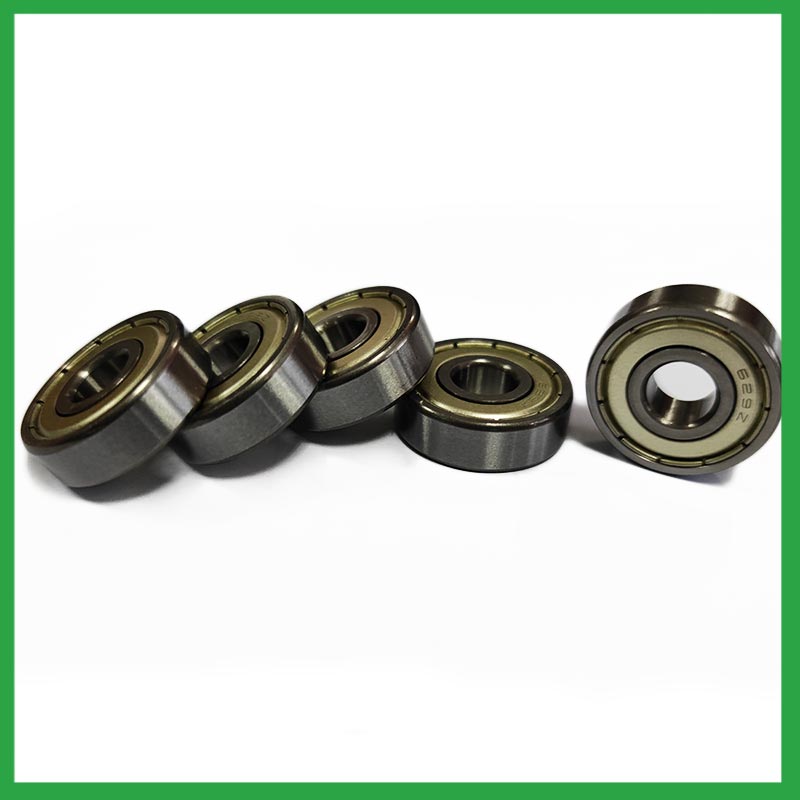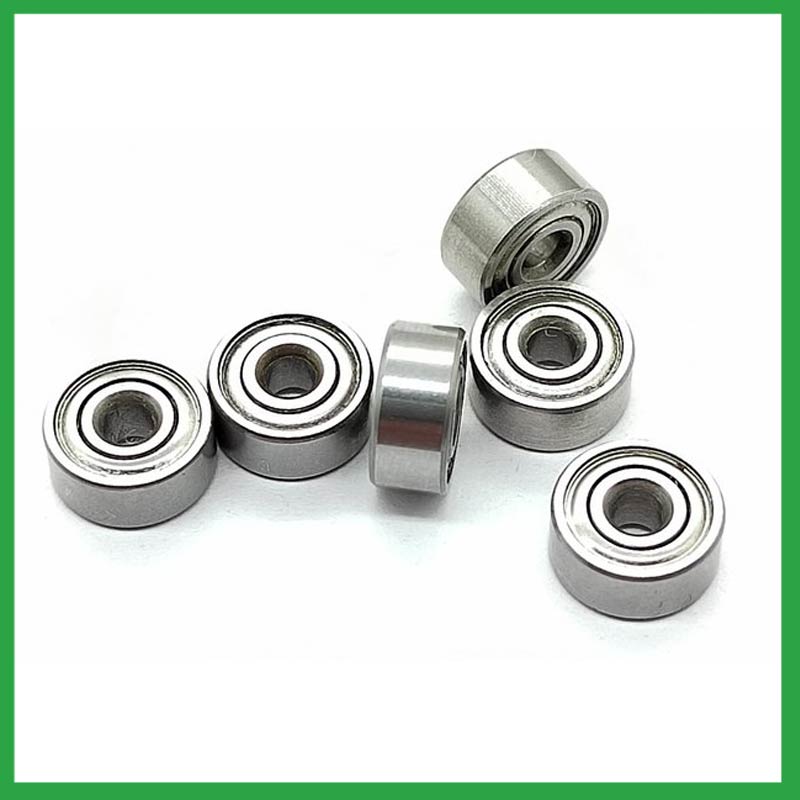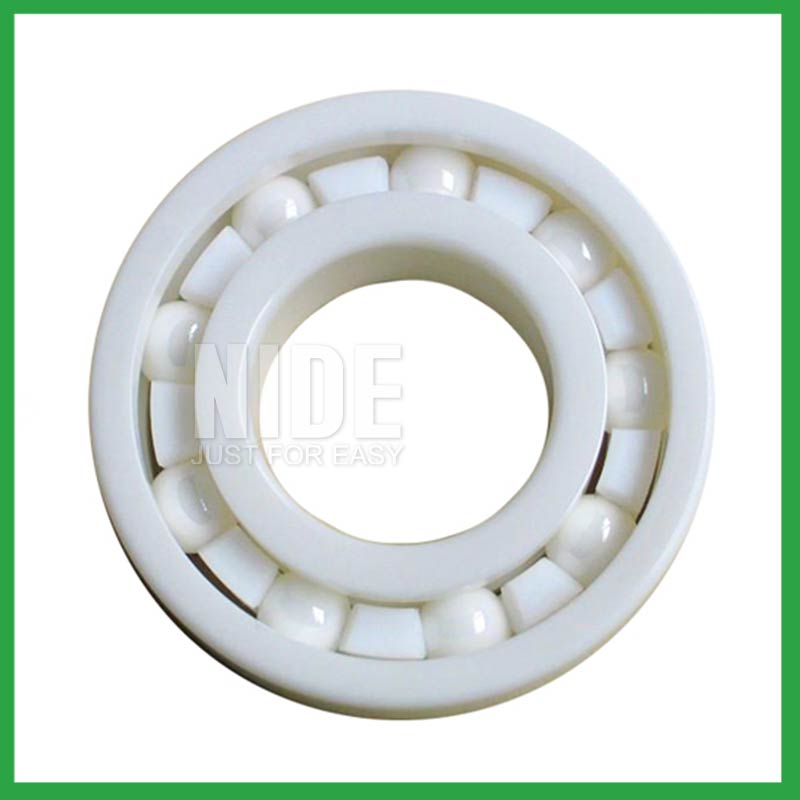PRODUCTS
CONTACT US
Ningbo Nide International Co., Ltd.
一一
· Contact person:Jack Zeng
· Mob/Whatspp/WeChat:0086-13738869026
· Email:emarketing@nide-group.com;marketing4@nide-group.com
· Add:No. 169, Wohushan Road, Daqi Subdistrict, Beilun District, Ningbo, China

Nide team could manufacture ball bearing as per customer’s drawing and samples.
If customer only has samples, we could also design drawing fo r our customer.
We also provide customized service.
Our ball bearing is widely applied the different industrials.
Haishu Nide International produces and supplies ball bearings.We have professional technical manpower for the mixing of polymer raw materials for the insulation coating of bearings, production of products, and quality control. We will grow together with customers with accurate quality, fast delivery and competitive prices.
In years of practice, we have established a strict quality assurance system. Our product range covers insulation paper,fan,motor cover and lamination,thermal protector,magnet,commutator, etc. They are widely used in fields such as single and three phase induction motor,air condition motor,washing machine motor,electric automotive motor,electric bicycle motor,servo motor,compress motor. We can produce OEM products and make the following drawings. Our principle is to prioritize service and quality!

| Parameter | Information |
| Product Name | rolling ball bearing clock |
| Place of Origin | Ningbo,Zhejiang |
| Brand Name | Nide |
| Material | stainless steel, etc. |
| Type | Ball |
| Warranty | 3months-1year |
| Port | Ningbo/Shanghai |
| Application | high-speed electric tools, etc. |
| Size(mm) | customize |
| Color | gray+customized |
| Precision Rating | as per customer's requirement |
| Certification | ISO 9001 Certification,CE-stator coil winding inserting machine,CE-stator coil forming machine,etc |
| Feature | Good wear resistance,Strong carrying capacity...etc |
| Packaging Details | Suitable for sea transportation |
| Service | one-stop service |
| Model Number | ball bearing |
| Supply Ability | 100000-500000 Piece/Pieces per Month |
| Lead time (days) | 15-20 (To be negotiated) |
Please note: The above table data is for reference only. For specific information, please contact us.
rolling ball bearing clock can be used in household appliances, such as mixers,upper and lower pressure rods,barrel machine spindle bearings,refrigerator door leaf wings, etc; It can also be used in industrial fields, such as dishwashers,reducers,weighing machines,motors, etc.
Before use, the model, size, and design of the ball bearing should be confirmed to ensure suitable application;
During installation, the installation load of the ball bearing should be minimized as much as possible to avoid unnecessary damage;
The bearing shaft and the bearing frame should be stable at the same time to avoid excessive tension.
Ball bearings have many advantages, making them highly competitive in the market.
Firstly, they are very durable and have good wear performance, making their service life longer than many other types of bearings.
Secondly, they are easy to install and can provide low friction performance in various applications.
Thirdly, they require a relatively low level of maintenance, making them cost-effective.
In addition, compared to many other types of bearings, their purchase cost is relatively low, making them an economical choice.




rolling ball bearing clock---FAQs Guide
2.What is the role of rolling ball bearing clock in reducing friction and energy loss in rotating machinery?
3.What are the after-sales services available for rolling ball bearing clock?
4.Can rolling ball bearing clock operate in high-speed applications, and what design features make them suitable for such conditions?
5.Are there rolling ball bearing clock designed for use in critical medical equipment?
6.What are the advancements and innovations in rolling ball bearing clock technology that have emerged in recent years?
7.How do cage designs affect rolling ball bearing clock speed and acceleration capabilities in high-speed machinery?
8.Are there miniature rolling ball bearing clock designed for use in precision instruments and small-scale mechanisms?
9.What is the typical noise level associated with rolling ball bearing clock, and how are noise-reduction techniques applied?
10.Can rolling ball bearing clock be used in both vertical and horizontal orientations?
1.Are there rolling ball bearing clock designed for extreme temperature environments, such as cryogenic or furnace applications?
High temperature rolling ball bearing clock use specialized lubricants to stand up to high temperatures. Grease-packed bearings are pre-filled with fluorine grease for high temperatures, while YS and SJ bearings use molybdenum disulfide (MoS2) solid lubricant to withstand temperatures up to 350°C and 400°C respectively.
2.What is the role of rolling ball bearing clock in reducing friction and energy loss in rotating machinery?
rolling ball bearing clock reduce friction by using smooth balls lubricated with oil or grease that freely roll between a smooth inner and outer surface. The main concept of the ball bearing is that objects that roll past each other produce less friction than if the objects were sliding against each other.
3.What are the after-sales services available for rolling ball bearing clock?
If you find problems or failures in the assembly or use of the bearings , which needs to consult and other services, please feedback to Nide International in time.
4.Can rolling ball bearing clock operate in high-speed applications, and what design features make them suitable for such conditions?
They have very low rolling friction and are optimized for low noise and low vibration. This makes them ideal for high-speed applications. rolling ball bearing clock are comparatively easy to install and require minimal maintenance.

5.Are there rolling ball bearing clock designed for use in critical medical equipment?
Precision rolling ball bearing clock are among critical components in medical devices that are vital to ensuring patient safety. Correct choice of suitable ball and ring materials and the right product design can ensure high-precision bearings — and medical devices — have a long service life.
Precision bearings are used in a wide variety of medical devices including surgical power tools, ventilators and heart pumps — and patient safety depends on them all. Whatever the device, there is an onus on medical device original equipment manufacturers (OEMs) to ensure that the right type of bearings are chosen, and fit precisely into the application.
6.What are the advancements and innovations in rolling ball bearing clock technology that have emerged in recent years?
Significant advancements have been made in rolling ball bearing clock steels over the years. Modern, ultra-clean bearing steels contain fewer and smaller non-metallic particles, giving ball bearings greater resistance to contact fatigue.
7.How do cage designs affect rolling ball bearing clock speed and acceleration capabilities in high-speed machinery?
In high-speed rolling ball bearing clock, external load has a great effect on cage stability and sliding ratio, especially for the bearings at work in the starting process. The cage stability is worse in the beginning of the bearing starting process. The axial load greatly influences cage dynamic performance in the bearing starting process.
In addition, while ball bearings worked under steady conditions, axial load and radial load both have a great influence on cage dynamic performance. The effects of axial load on cage dynamic performance during the bearing starting process are opposite from the effects under steady conditions.
8.Are there miniature rolling ball bearing clock designed for use in precision instruments and small-scale mechanisms?
Miniature bearings, despite their small size, play a significant role in various industries and applications. These compact powerhouses, typically measuring less than one inch in outer diameter, offer exceptional precision, durability, and reliability. Miniature bearings find extensive use in precision instruments and robotics.

9.What is the typical noise level associated with rolling ball bearing clock, and how are noise-reduction techniques applied?
To measure in accurate way the rolling ball bearing clock noise under rotation during their manufacturing process is a key activity particularly in the production of medium, small and ultra-small deep groove ball bearings. This capability in bearings noise analysis has become the real distinguishing element between a standard bearings noise equipment and a superior class one.
The various types of vibration and sound in rolling bearings can be grouped in four main categories: structural, manufacturing, handling and other. The structural vibration consists mostly of race, click, squeal and cage noise: it can be continuous or intermittent depending on specific cases. The manufacturing vibration is instead related to the waviness noise generated by the geometrical imperfections of inner and outer ring and of rolling elements, being always continuous in nature. The so-called handling vibration is normally associated with flaw and contamination and is generating – in most of the cases – irregular noise. Then there are other types of vibrabition that include noise generated by sealing and lubricant (irregular) or by runout (continuous).
10.Can rolling ball bearing clock be used in both vertical and horizontal orientations?
Sleeve Bearings: Sleeve bearings, also known as plain bearings, employ a simple yet effective mechanism. A cylindrical sleeve separates the rotating shaft from the stationary portion of the bearing, reducing friction and enabling smooth rotation. Sleeve bearings are characterized by their quiet operation, cost-effectiveness, and suitability for horizontal mounting orientations.
Ball Bearings: Ball bearings introduce small metal balls between the moving parts, providing enhanced durability and reduced friction. This design allows for smoother and more efficient rotation, making ball bearings well-suited for high-performance applications and vertical installations.

